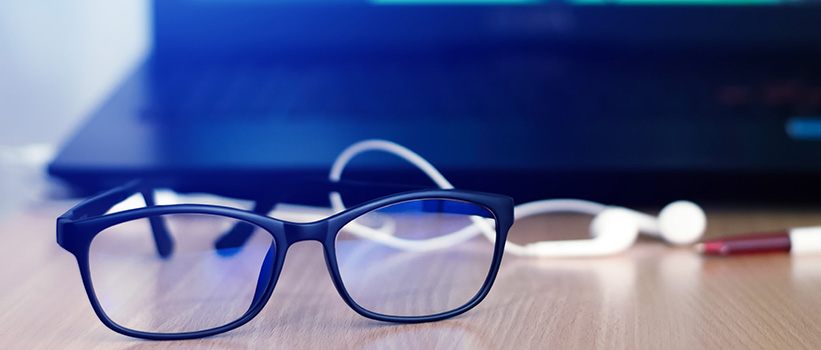Keeping Your Eyes Safe at Work
BIDMC Contributor
MARCH 28, 2018

Chances are you’re reading this post from a computer, phone or tablet. Many of us spend close to eight hours a day in front of a screen. This puts us at risk for asthenopia, or eye strain, with symptoms such as discomfort in or around the eyes, blurred vision, occasional double vision or headaches.
During Workplace Eye Wellness Month in March, BIDMC’s Chief of Ophthalmology Nurhan Torun, MD, weighs in with some tips to reduce symptoms of eye fatigue.Take Breaks from Blue Light Exposure
Blue light—part of the visible light a human eye can see—has shorter wavelengths and more energy than some other forms of light. Your exposure to blue light from digital screens is small compared to the amount of exposure from the sun. However, because of the close proximity and length of time we spend looking at screens, they’re a potential cause of eye fatigue.
“It’s not uncommon for patients who spend a lot of time in front of a screen to complain of eye discomfort or fatigue,” Torun says.
The best remedy? “Take breaks,” Torun says. “Just like a physical workout. Your eyes have many muscles and after long periods of work, you need to take a break.”The general rule to follow: 20/20/20. After 20 minutes of close-up work, look at something 20 feet away for 20 seconds. “Giving the eyes a chance to focus on a distant object can help alleviate symptoms of eye strain,” Torun says.
Blue Light Filters
Patients with symptoms of asthenopia should call their doctor to set up an eye exam.
“People who are near-sighted might experience more eye fatigue than usual with close-up work if their glasses overcorrect their nearsightedness,” Torun explains. “Or maybe the reading glasses you bought aren’t strong enough to correct your vision in front of a screen. All of these scenarios can contribute to eye strain. It’s best to have an eye exam to explore these possibilities.”
After an exam, your doctor can help determine the best plan of treatment. This may include:
- Making adjustments to your screen to reduce the amount of blue light exposure;
- Adding an anti-glare protective filter to your screen;
- Or ensuring your prescription is correct.
“In today’s digital world, many eye glasses can be prescribed with special coating that filters blue light,” Torun says. “This anti-glare coating can help lessen digital eye strain.”
Dry Eye Syndrome
Dry eye syndrome is caused by a lack of moisture on the surface of the eye. While most people with mild dry eye syndrome have no long-term complications, the condition can cause irritation and discomfort in the eyes.
A few factors can increase the risk of dry eyes:
- Digital screen use. When working at a computer or using a smartphone, we tend to blink our eyes less fully and less frequently, which can increase the risk of dry eye symptoms.
- Contact lens wear. Though difficult to determine the exact extent that contact lenses contribute to dry eye, discomfort is a primary reason why people discontinue the use of their contacts.
“If your eyes feel itchy or dry after long periods of time in front of a computer, you can ask your doctor about artificial tear eye drops,” Torun says. “These can help keep your eyes well-lubricated and more comfortable.”
Beyond the Screen
Even if you don’t work in front of a screen, it’s just as important for you to take preventive measures.
Eye protection is needed wherever there is the possibility of chemical, environmental, radiological or mechanical hazards to the eye. “So whether you’re a welder or a chemist, I encourage you to use the proper eye protection goggles to prevent injury.”
Learn more about the Ophthalmology services available at BIDMC.
